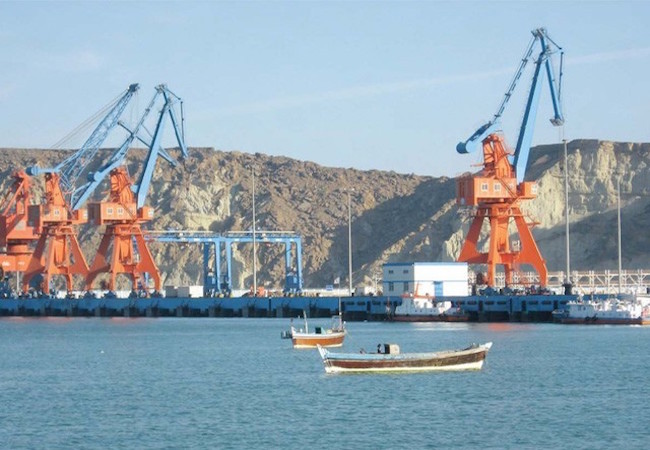
By Sadia Kazmi
China continues toinvest unprecedentedly in Pakistan for the CPEC project. This financial assistance is aimed at developing the state’s infrastructure and energy sector. This cooperation promises to bring progress through the construction of highways, railways, pipelines, power plants, communications and industrial zones, most of which has already taken off and are underway. The progress on CPEC makes it the fastest developing corridor among the six BRI corridors China plans to establish. For CPEC, the initial investment of US $ 46 billion has now been increased to US $ 57 billion. The overall efforts so far have yielded quite fruitful results, where many early harvest and midterm projects have been successfully completed. Out of 39 “early harvest” projects under CPEC, 19 have since been completed or are under construction with a Chinese investment of about US $18.5 billion.
One of the main areas of focus for development is the Gwadar port. China is keen on fully developing this part under the ambit of CPEC project, which is estimated to be completed by the year 2030. This strategically located Arabian Sea port naturally gains huge significance owing to its location. First the very fact that it is deep water port, in addition to it being situated at an ideal position where the three most commercially significant regions of the world converge: South Asia, Central Asia and the Middle East, makes it a highly valuable entity. While Central Asia and Middle East offer resource rich landscape, South Asia provides a huge potential market for these commodities. With CPEC fully functional, Gwadar port will be an important transit route offering world’s largest transhipment cargo facilities.
Gwadar port not only holds importance and promises benefits for the South Asian region but the landlocked western China with a Muslim majority Xinjiang region will be able to be connected to the Gwadar port through Gwadar to Kashgar road link. For China itself it is an opportunity to access the sea through much shorter and convenient route, while at the same time the Central Asian states being landlocked get the much needed opening. It is expected that mostly fuel imports from China and other trading products will be loaded on the trucks and travel on the Gwadar-Kashgar road. China’s link to Gwadar passes through its trusted friend Pakistan hence the chances of it being closed on China are hardly there as compared to the much riskier route for its goods through Malacca Straits.
The huge potential this single port holds within the CPEC compared with a number of other projects under its ambit is immense. It is believed that the port can easily become South Asia’s most significant and biggest shipping hub by 2030 and would be capable of handling 400 million tons of cargo on annual basis. For now it is estimated to be capable of dealing with one million tons of cargo on yearly basis. It looks quite possible that in less than five years time it will have the additional capacity to handle thirteen million tons of cargo.
The city of Gwadar itself will be recipient of several benefits. The Gwadar hospital capacity is being increased to 300 beds from the existing 50-bed. Fisheries processing plant is being constructed which will help them develop on their natural capabilities as most of the town is dependent on the local fishing for their daily survival. With the help of fisheries processing plant they will be able to export the local fish to China as well as to the other cities of Pakistan. This will also lead to the chance for better earning along with improvement in the quality of their living standards. One of the biggest problems and the point of friction between the federal government and the local baluch is their demand for control over their own resources. In addition to this the problem of electricity shortage and lack of clean drinking water further adds to their miseries. Pakistan and China have specifically aimed to bring improvement in these sectors by working on projects that deal with the construction of desalination plant, as well as 300-mega watts coal based power plant. These measures are definitely going to bring substantive respite to the locals of Baluchistan specifically to the people living in Gwadar city. The new international airport is also being built which will be connected to the rest of Pakistan through international standard six-lane expressway and will eventually connect to adjacent countries as well including Iran and Afghanistan. Other than this the port offers a number of employment opportunities to the locals as 65% of labour force and engineers comprises of local Pakistanis which are actively involved in various type of construction work.
Although security concerns are a reality but this aspect is essentially addressed through deployment of 15,000 troops and paramilitary forces for the security of CPEC project. Gwadar port with its multilayered and multidimensional benefits stands to improve economic conditions of the country while offering immense opportunity to connect and strengthen relation with China as well with other neighbouring countries.




